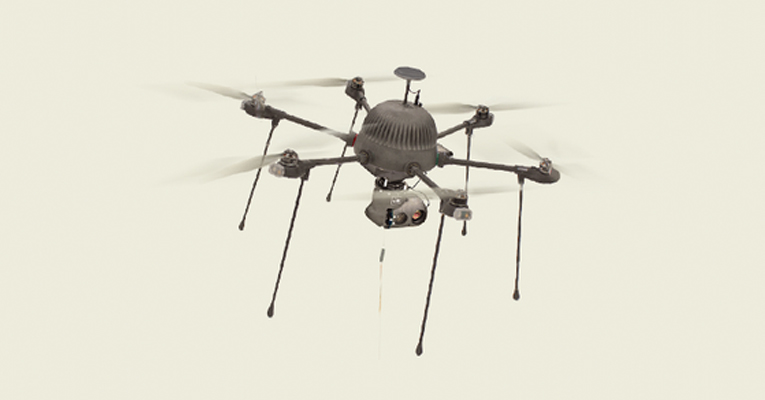Government announces operating policies for Drones
August 29, 2018: The Indian government is set to introduce new regulations from 1st December for operating remotely piloted aircraft systems (RPAS), bringing them under a Digital Sky Platform.

August 29, 2018: The Indian government is set to introduce new regulations from 1st December for operating Remotely Piloted Aircraft Systems (RPAS), bringing them under a Digital Sky Platform.
Since drones are a technology platform which has wide-ranging applications from photography to agriculture, from infrastructure asset maintenance to insurance, efforts are being made to establish a drone ecosystem in India, said the Ministry of Civil Aviation.
Instead of simply digitising a paper-based process for registering and operating drones, India has formulated an all-digital process. The Digital Sky Platform is the first-of-its-kind national unmanned traffic management (UTM) platform that implements “no permission, no takeoff” (NPNT).
As per the regulation, there are 5 categories of RPAS categorised by weight, namely nano, micro, small, medium and large.
Users will be required to do a one-time registration of their drones, pilots and owners. For every flight (exempted for the nano category), users will be required to ask for permission to fly on a mobile app and an automated process permits or denies the request instantly. To prevent unauthorized flights and to ensure public safety, any drone without a digital permit to fly will simply not be able to takeoff. The UTM operates as a traffic regulator in the drone airspace and coordinates closely with the defense and civilian air traffic controllers (ATCs) to ensure that drones remain on the approved flight paths.
Drone Regulations 1.0 are intended to enable visual line-of-sight daytime-only and a maximum of 400 feet altitude operations. Air space has been partitioned into Red Zone (flying not permitted), Yellow Zone (controlled airspace), and Green Zone (automatic permission).
Going forward, the Drone Task Force under the chairmanship of the Minister of State Jayant Sinha will provide draft recommendations for Drone Regulations 2.0. These regulations will examine, inter alia, the following issues: Certification of safe and controlled operation of drone hardware and software; air space management through automated operations linked into overall airspace management framework; beyond visual-line-of-sight operations; contribution to establishing global standards; suggestions for modifications of existing CARs and/or new CARs.
“Today we start an exciting new chapter in India’s aviation history by allowing commercial use of drones. I am sure that many new and exciting applications will emerge that will propel India’s economy forward. Our progressive regulations will encourage a vast Made in India drone industry,” said Suresh Prabhu while announcing the Drone Regulations 1.0 recently.




